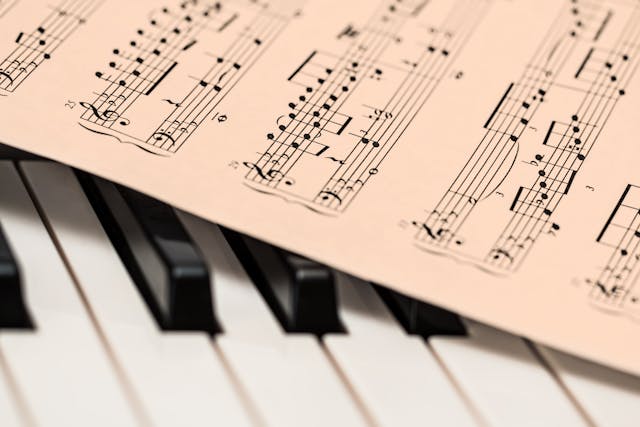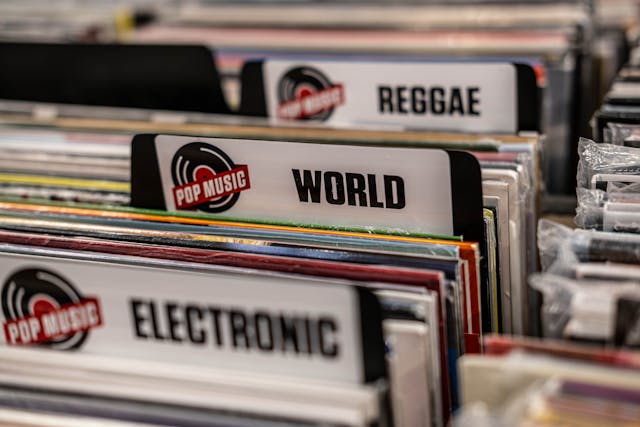The Influence of Music Genres: How Different Styles Shape Culture
Music has been a driving force in shaping society for centuries, and its various genres reflect and influence the cultural, social, and political movements of their times. From the soul-stirring melodies of classical music to the pulse-pounding beats of electronic dance music (EDM), each genre has its own unique way of capturing the essence of an era, region, or community. In this article, we will explore how different music genres have shaped culture and contributed to the development of collective identity, values, and trends around the world.

Classical Music: The Foundation of Western Music Tradition
Classical music, spanning from the Baroque, Classical, Romantic, and even early 20th century periods, laid the groundwork for much of Western music. Composers like Beethoven, Mozart, Bach, and Tchaikovsky not only created masterpieces of technical brilliance but also conveyed the intellectual and emotional sensibilities of their times.
Cultural Influence of Classical Music:
-
Renaissance of Arts and Philosophy: Classical music was born in the context of the Renaissance and Enlightenment, periods when Europe was experiencing intellectual and artistic revolutions. It represented the harmony, discipline, and balance that were ideals of those times.
-
The Soundtrack of the Elite: Classical music was often associated with royalty, aristocracy, and the intellectual elite, as it was mainly performed in concert halls or private settings. It cultivated a sense of refinement and cultural sophistication.
-
Cultural Preservation: Today, classical music is a cherished part of the cultural heritage, with performances being held at prestigious institutions like the Vienna Philharmonic Orchestra or The Royal Opera House. Its influence still shapes modern music composition and orchestration.
Jazz: The Sound of Rebellion and Social Change
Jazz music emerged in the early 20th century in New Orleans and quickly became a symbol of cultural liberation, freedom of expression, and artistic innovation. Its roots lie in African American communities, blending elements of blues, ragtime, and European harmonic structures.
Cultural Influence of Jazz:
-
Cultural Identity: Jazz became a powerful tool for African Americans to express their social realities and experiences. It conveyed a sense of resilience, improvisation, and creative freedom, and it helped define the Harlem Renaissance, a cultural movement in the 1920s that championed African American art, literature, and music.
-
Social and Political Movements: Jazz played a central role in shaping the Civil Rights Movement of the 1960s. Legendary musicians like John Coltrane and Louis Armstrong used jazz to communicate themes of racial identity, freedom, and justice.
-
Innovation and Cross-Cultural Influence: The improvisational nature of jazz influenced a wide range of genres, including rock, funk, hip-hop, and electronic music. Its influence on modern music is profound, helping to shape the future of musical experimentation.
Rock and Roll: The Sound of Youth Rebellion and Counterculture
Rock music, born in the late 1940s and early 1950s, was a genre that revolutionized popular culture and helped define the youth counterculture movement of the 1960s and 1970s. Pioneers like Elvis Presley, Chuck Berry, and The Beatles introduced a new, electrifying sound that resonated with young people seeking rebellion, freedom, and expression outside of traditional norms.
Cultural Influence of Rock and Roll:
-
Teenage Rebellion: Rock music was closely associated with youth rebellion and the rejection of the conservative values of the previous generations. The upbeat, fast-paced rhythms and electric sound of rock gave voice to the baby boomer generation’s quest for independence and individuality.
-
Social Movements: The 1960s counterculture, which encompassed the hippie movement, anti-Vietnam War protests, and the rise of civil rights activism, found a soundtrack in the rebellious anthems of rock bands like The Rolling Stones, The Doors, and Jimi Hendrix.
-
Gender and Sexual Revolution: Rock music also became a platform for breaking down gender and sexual boundaries. With artists like David Bowie and Queen’s Freddie Mercury, rock celebrated gender fluidity, and explored themes of sexuality and self-expression in ways that challenged societal norms.
Hip-Hop: A Voice for the Marginalized
Emerging from the Bronx in the 1970s, hip-hop has evolved from a local street movement to a global cultural phenomenon. With its unique blend of rapping, turntablism, graffiti art, and breakdancing, hip-hop quickly became a voice for marginalized communities, particularly African American and Latino youth in urban areas.
Cultural Influence of Hip-Hop:
-
Voice of the Marginalized: Hip-hop lyrics, often rooted in the struggles and realities of inner-city life, gave a platform to disenfranchised groups, allowing them to speak about issues like poverty, racism, violence, and inequality. Artists like Tupac Shakur, Notorious B.I.G., and Nas became the voices of their generation, spreading messages of empowerment and resistance.
-
Cultural and Fashion Influence: Hip-hop’s influence extended beyond music to become a dominant force in fashion, language, and dance. The rise of hip-hop fashion, including oversized clothing, sneakers, and gold chains, influenced mainstream culture, as did the unique slang and dance styles that emerged alongside it.
-
Global Impact: Hip-hop’s influence has gone global, with artists from all corners of the world adopting and adapting the genre. From K-pop in South Korea to Afrobeat in Nigeria, hip-hop’s global reach continues to shape the cultural landscape.
Electronic Dance Music (EDM): The Global Party Sound
EDM has seen an explosive rise in popularity, particularly in the 21st century. Rooted in electronic music genres such as techno, house, and trance, EDM’s rapid development can be credited to advances in technology and the rise of large-scale music festivals.
Cultural Influence of EDM:
-
Youthful Escapism and Party Culture: EDM, with its pulsating beats and anthemic drops, has become the soundtrack for large music festivals and nightclubs around the world. It represents youth culture's desire for freedom, release, and connection, particularly at festivals like Tomorrowland and Electric Daisy Carnival.
-
Global Connectivity: EDM’s rise to global prominence has been facilitated by the internet and social media, which has allowed artists and fans to connect and share music worldwide. It has helped bridge cultural gaps and created an international network of fans who share a love for the genre’s hypnotic beats.
-
Inclusivity and Unity: EDM culture has long been associated with inclusivity and unity. Its often non-verbal and instrumental nature fosters a sense of community and shared experience among diverse groups of people, regardless of background or language.
Reggae: Music of Peace and Resistance
Originating in Jamaica in the late 1960s, reggae is more than just a music genre—it’s a cultural movement. Pioneers like Bob Marley used reggae as a platform to address social justice issues, promote peace, and spread messages of unity and love.
Cultural Influence of Reggae:
-
Social Consciousness: Reggae became synonymous with the Rastafari movement and messages of spirituality, anti-colonialism, and resistance to oppression. Artists like Bob Marley and Peter Tosh became global ambassadors for social change and human rights.
-
Global Impact: Reggae’s influence extends far beyond Jamaica, having a profound impact on global music and culture. Its themes of peace and social justice resonate with people worldwide, and its sound has influenced genres like punk rock, hip-hop, and ska.
-
Dance and Fashion: Reggae has also influenced fashion, with its distinctive styles of Rastafarian clothing, dreadlocks, and vibrant colors making a statement about identity and cultural pride.

Country Music: The Heartbeat of Rural America
With its roots in the folk and western music traditions of the Southern United States, country music has long been a reflection of American rural life. It is closely tied to the culture, values, and struggles of working-class Americans.
Cultural Influence of Country Music:
-
American Identity: Country music often highlights themes of family, faith, and hard work, representing the values of rural and small-town America. It gives a voice to the everyday experiences of people living outside major cities.
-
Social and Political Themes: Country artists have historically used their music to address topics such as patriotism, loss, heartbreak, and social issues. Over time, country music has reflected societal changes, from post-war sentiments to modern political debates.
-
Global Popularity: While country music originated in the U.S., it has gained international popularity, influencing music scenes in countries such as Canada, Australia, and even Norway, where country music festivals have become significant cultural events.
Conclusion
Music is much more than entertainment—it is a powerful force that shapes culture, identity, and social movements. Every genre reflects the values, struggles, and aspirations of its time, and in doing so, influences the people who engage with it. Whether it’s jazz’s role in the Civil Rights Movement, hip-hop’s voice for the marginalized, or EDM’s global party culture, each style contributes uniquely to the soundtrack
of our collective experience. The power of music transcends boundaries, creating a common language that unites, inspires, and challenges us all.












